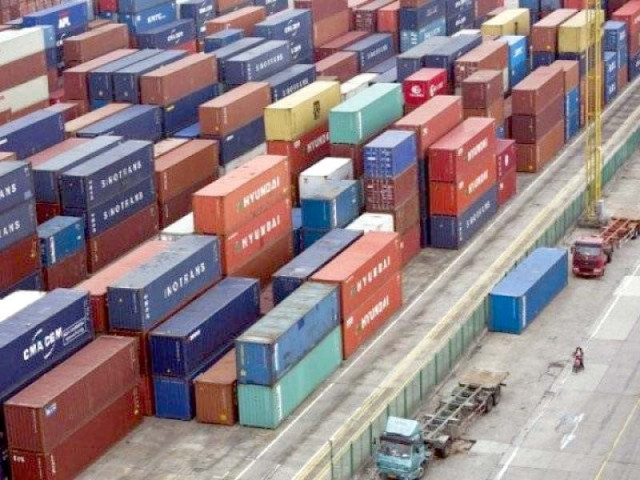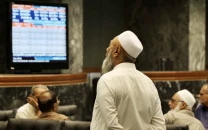Pakistan needs a more holistic pro-trade strategy
Policymakers must ensure export-oriented strategies prioritise enhancing businesses’ capabilities, productivity

The latest data from the Pakistan Bureau of Statistics (PBS) indicates a promising turnaround in both exports and imports, marking a positive trajectory from the previous year’s downturn. February 2024 witnessed an 18% year-on-year increase in exports and a 9.94% rise in imports compared to February 2023.
In a bid to foster export-driven growth over import reliance and subsidy-oriented strategies, the government has introduced special incentives for top exporters and taxpayers. However, historically, import surges have strained foreign exchange reserves, leading to recurring balance of payment crises and International Monetary Fund (IMF) interventions. While such measures may be essential to reinvigorate economic expansion, they often overlook the vital contributions of small and medium enterprises (SMEs), the backbone of the business ecosystem.
Pakistan’s urgent need to boost exports is underscored by its disproportionately low export-to-GDP ratio, lagging even behind several impoverished, landlocked least developing countries. To effectively address this disparity, policymakers must ensure that export-oriented strategies prioritise enhancing businesses’ capabilities and productivity levels. Sustainable growth hinges on fostering competitiveness and long-term viability rather than short-sighted gains reliant on subsidies and sector-specific incentives.
The immediate priority to boost the export of goods hinges on revitalising industrial and manufacturing activity in Pakistan. Over the past two decades, Pakistan has consistently reported one of the lowest manufacturing percentages of GDP in the South Asian region, hovering between 10% and 14%. In comparison, countries like India and Bangladesh have seen higher rates of industrial output. However, Pakistan’s industrial performance has witnessed a decline in recent years, with the latest Quantum Index of Selected Large-scale Manufacturing Items reporting a year-on-year growth of -0.5% in the first seven months of FY24.
Although this marks an improvement from the -2.7% reported during the same period in the previous fiscal year, it still falls short of the peak observed in the first quarter of FY22. Encouragingly, the business confidence index, jointly reported by the State Bank of Pakistan (SBP) and the Institute of Business Administration (IBA), has remained in the positive zone since December 2023. This recovery from the lows seen in March and April 2023, reminiscent of the COVID-19 lockdown period, underscores a positive sentiment among businesses.
However, to translate this regained confidence into tangible industrial and manufacturing growth, policymakers must address import restrictions, particularly concerning raw materials, intermediate goods, and capital goods. Streamlining these import barriers is crucial to stimulate industrial activity and drive export-oriented production in Pakistan.
Additionally, alongside reshaping export policies to foster export-led growth, it’s equally crucial to adopt a more effective strategy towards imports. While a surge in imports contributes to the trade deficit and can lead to a balance of payment crisis, it’s essential to recognise that a significant portion of Pakistan’s imports consists of fuel. According to World Bank data, fuel imports make up 38% of Pakistan’s total merchandise imports, surpassing the average for lower middle-income countries. However, Pakistan lacks participation in global and regional value chains in the oil industry, as it doesn’t export refined petroleum products.
Reducing fuel imports can be achieved not only by investing in alternative energies but also by enhancing efficiency in fuel usage. Pakistan’s import strategy should also address the challenge of converting imported inputs into exportable output. This issue stems from both productivity and efficiency constraints and a lack of integration into trade networks that facilitate two-way linkages between businesses.
To enhance productivity and efficiency, Pakistani exporters must access the most effective sources for their inputs. Furthermore, resuming trade ties with India could bolster import capabilities by providing access to a significant source of raw materials and intermediate goods, particularly in the textile industry.
Third, Pakistan’s performance in gross fixed capital formation as a percentage of GDP is dismal. At 11%, it falls below not only many South Asian counterparts but also lower-middle-income countries. The private sector’s lack of investment is a significant factor contributing to the low level of exporting activities in Pakistan. Regional counterparts report much higher imports of machinery and equipment, crucial for keeping their production technologies up to date.
As the export-led growth strategy relies on export subsidies and incentives, exporters may become dependent on measures guaranteeing certain returns, neglecting investments that enhance their capabilities and productivity. Policymakers must ensure that businesses reinvest their earnings in productive activities, fostering a more conducive environment for such investments.
Lastly, it is imperative to encourage investments in improving digital infrastructure in Pakistan. Approximately 5.5% of Pakistan’s imports consist of ICT goods, compared to 9.4% in India and over 30% in Vietnam. East Asian countries report significantly higher levels of fixed broadband connections and mobile subscriptions per capita than their South Asian counterparts. Access to ICT technologies will enhance the capabilities of Pakistani producers.
Implementing the Pakistan Single Window not only reduces costs and time on trade-related documentation and procedures but is also likely to increase Pakistani firms’ participation in international trading activities.
In essence, enhancing the productivity and capabilities of Pakistani firms is crucial for them to become stronger regional and global competitors. The government should support all businesses rather than selectively favouring winners, fostering a more dynamic business environment.
THE WRITER IS THE ASSISTANT PROFESSOR OF ECONOMICS AND RESEARCH FELLOW AT CBER, INSTITUTE OF BUSINESS ADMINISTRATION, KARACHI
Published in The Express Tribune, April 15th, 2024.
Like Business on Facebook, follow @TribuneBiz on Twitter to stay informed and join in the conversation.


















COMMENTS
Comments are moderated and generally will be posted if they are on-topic and not abusive.
For more information, please see our Comments FAQ